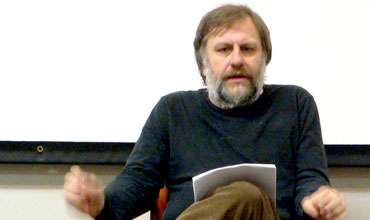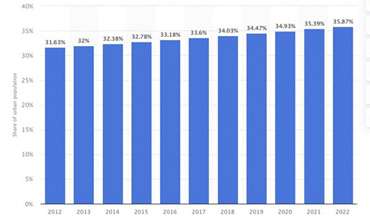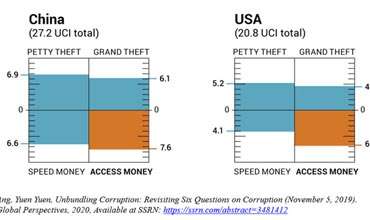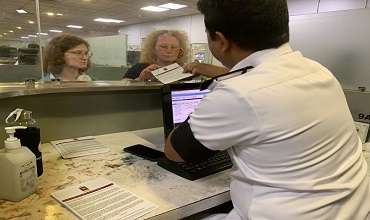The cryptic truth behind the 2019 A/L cut-offs
With the recent release of university cut-offs, there had been many arguments put forth, but what really happened? Which group of students, out of the new and old syllabuses were really affected?
As you all may be already knowing, for the 2019 GCE A/Ls there were two sets of papers. Old syllabus and new syllabus students both sat for the exam this time, separately, which was resulted due to the revisions and changes in the curriculum taking place every five years or so. So two separate Z scores were issued for the two groups of students, which had been decided from a court case in 2011. Back in 2011 when there seemed to be an error in the cut-offs, some students went to court bringing forth a couple of agreements. The ultimate decision of the court was to inform the students the method of university selections well before the examination with 2 syllabuses.
Therefore the university grants commission put an advertisement in the web site of the UGC as well as in newspapers mentioning the method of enrolment in April 2019 well before the A/L examination in August 2019. That decision was to take the composite average of students according to the performance of the past 5 years from 2013 to 2017. They considered the students who sat for the first time as the new syllabus students, and the students who sat for the second and third times as old syllabus students for the calculation. It was fair as they advertised the method of selection well before, and clearly had stated that the method should be questioned then and there within one month of the advertisement on their website as well as in the papers.
No one bothered back then to even comment about it. After getting A/L results in December 2019, the University grants commission printed and released the annual booklet for the students to apply for university admissions mentioning the same criteria of selections as advertised on the web site in April 2019. Then only, students from the new syllabus got agitated and filed a court case in June 2020 to remove that method of selection. It was taken up in the courts on the 16th July 2020 and the details were collected, however leave to proceed was not granted in the court. The students and their parents belonging to the old syllabus found out about the following court case done by the new syllabus students after it had even been taken up in the courts. By that time the old syllabus students and their parents were requesting the government to increase the medical college intake as a whole, to benefit both the old and new syllabus students, while the new syllabus students were secretly plotting against them. Once the unreasonable court case filled by the new syllabus students came into light, 2 student groups from the old syllabus had intervened the petition of the court case of the new syllabus students, abiding by the fact that the notice was published in April 2019 and nobody from the new syllabus had bothered to question it back then. This matter was once again taken up in the courts on the 11th September 2020 and both the old and new syllabus groups were asked to go for an out of court settlement with the state counsellor. Hence there was a meeting with the state counsellor, UGC chairman, UGC secretary, lawyers from both the sides, and the petitioners from the new and old syllabuses, in the auditor general department on the 6th of October 2020. However there were no agreements made.
On the same day the UGC had published the selection criteria for the students who are going to sit for the 2020 A/L s again as first attempt, and second attempt from new syllabus and third attempt from old syllabus. It had mentioned the same criteria of going by the composite average of the past 5 years from 2014-2018. Therefore the intervening parties had to put 2 motions to inform the UCG to abide by the earlier decision of going by the composite average of the last 5 years from 2013-2017 as they had previously announced before the exams for even the 2019 university admissions. All of these legal matters and an unforeseen pandemic delayed the release of the cut-off marks and took around 14 months after the 2019 A/L examination, while the students who were at the border with AAA and AAB from the old syllabus who had already repeated the exam once or twice were left to wonder whether they should repeat again. If the UGC could have at least tried to release the cut-offs before the 2020 A/Ls then maybe many desperate students could have come to a conclusion on whether or not to repeat the exam.
***
On top of all of this, there was another case filed by the new syllabus students against the education department stating that their new biology handbook was not released on time. They had claimed that the students from English medium received the handbook of biology before the Sinhala medium students.
First of all that is an internal matter amongst two groups of new syllabus students. If one group of new syllabus students had an added advantage, why would the other group of new syllabus students fight with the old syllabus students when they had nothing to do in this matter. The new syllabus bio students should be thankful since they at least had a handbook in the first place. Until the 2018 A/Ls (and for 2019 A/L old syllabus students), there had been no handbook or clear cut syllabus outline for the biology subject hence students had to know almost anything and everything concerning the subject. So if at all anyone should, the old syllabus students who faced the exam in such an atmosphere should be complaining instead. So establishing a handbook was an overall good move done by the education department’s syllabus revision, but by what right should the new syllabus students complain over it just because only half of them got it late? They got a book stating what to study and what not to study, so either ways they were at an advantage over the old syllabus bio students who were blindly studying anything and everything since the biology teacher’s guide never had clear cut subject borders.
Biology stream is considered hard due to the subject Biology which not only has a lot to memorize word to word, but a simple addition of a synonym instead of the actual word would be considered as a wrong answer. The new syllabus revision from the biology subject had removed many difficult chapters from the syllabus, which were present for the old syllabus students increasing the load that had to be memorized by them without even a proper handbook. As students had pointed out, the style of the question papers and some of the marking schemes of the questions, favoured the new syllabus more than the old syllabus. And it’s a rule in biology that if the paper didn’t have the exact answer present in the marking scheme, there will be no points allotted, abiding by the full marks or none method.
As you may have heard, the old syllabus students have lower Z scores compared to the new syllabus students. And yet there are 301 AABs of Old syllabus students who had missed medical college admissions while there are only 103 AABs of New syllabus students who had missed the medical college entrance. Everyone knows what an A stands for, and that its value is equal and universal (at least universally agreed upon by a country’s educational board).
Now let’s see the roots of the Z score disparity among the two groups of students. The term “Z score” is a popular calculation method that is used to analyze statistics.
Z score= An individual’s score (N) – the median score (x̅)
Standard deviation (SD)
Here, in both the syllabuses the SD is almost the same. The median (x̅) is the average score for that subject. Now for the new syllabus students, the median (x̅) value is very low because both the best and the worst students are attempting at once, reducing the average value. The median value is high in the old syllabus since not many students attempt again and many students who attempt won’t perform as bad as their first attempt. So even if both the syllabus students have a mark of 75 (A), the new syllabus students will have a higher Z score and the old syllabus students will have a lower Z score. So in that sense, are the claims made by the new syllabus students really fair, that they should be taken to university more since they have higher Z scores? Give it a thought.
The education department actually confirmed that the total marks and performance are higher and better in the students from the old syllabus. To be frank these Z scores affected students from the old syllabus more due to this evident discrepancy. They got ashamed to tell their Z scores, when in reality the Z score is just a relative comparison which can be used to compare in-between a single population only. And since there are two sets of populations, “Old” syllabus and “New” syllabus, Z scores from the two populations can’t be compared at once and it is statistically incorrect to do so. There were not many articles published to convince these students and their parents, and many old syllabus students were affected psychologically.
If the Z score system is like the icing, on the cake which resembles the problems these students are facing, the district basis system is like the cherry on the top. Due to the district basis system the most disadvantaged group happens to be the Colombo, Galle and Kandy bio stream students. There are students with lower Z scores and lower island ranks, selected from other districts even with very low grades into universities and even for medicine. And there are students with AAAs even and many with AABs who aren’t getting medical college admissions from these districts. What more should these students do to get into medicine and can anyone even ask them to do better than they already have? There are no private medical colleges in the country when there are plenty of private engineering colleges and other private universities, so should these excellent yet less fortunate students go abroad just like that because they aspire to do medicine? The minimum standards for the foreign medical graduates is CCS and these students who qualified are far above this grade.
Since what has happened has already happened the students with AAAs and those above the island rank of the last AAA student for medicine should be granted medical college admissions. There are apparently only a total of 104 students above this last AAA student of both the old and new syllabuses. So if these students can be given seats, it will to some extent rectify most of the problems concerning the biology stream. After all we are living in the 21st century so every problem has more than just one answer. So if there isn't enough space, create them. It was never these students’ fault that they had to go through all of this in the first place.
Since a lot of foreign undergraduate students follow lectures from Sri Lanka at present, why can’t we have lectures online from home while being affiliated to a faculty of medicine in and around Colombo? This will influence an additional intake further to justify these children. The SAITM building is not being used currently, so it can be taken by the government to accommodate these children as it is easy to find lecturers in Colombo rather than far away. It can even be affiliated to University of Moratuwa and the number of medical students can be increased without a haze. It’s about time this matter had been settled and justice prevailed.
Therefore we hope there will be justice to these students who are eagerly awaiting a response.
- A concerned parent
-
Still No Comments Posted.


















Leave Comments